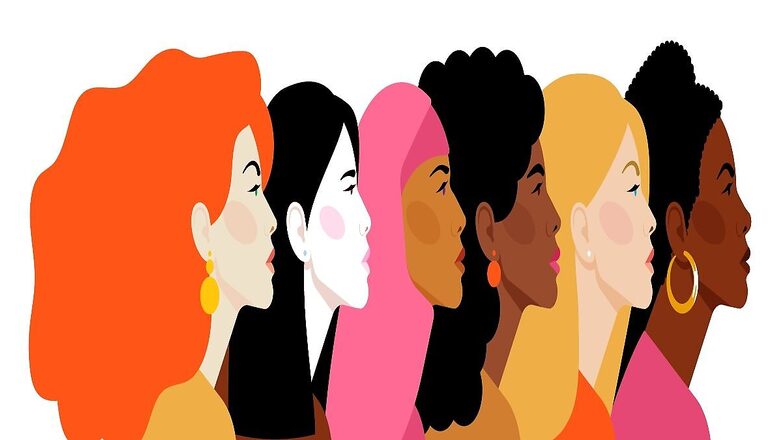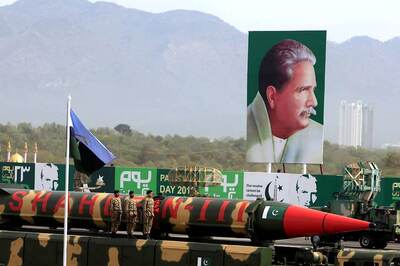
views
It has been 22 years since the first resolution on Women, Peace and Security (WPS), United Nations Security Council Resolution (SCR) 1325, was espoused by the United Nations Security Council (UNSC) on October 31, 2000. It’s a wide-reaching global frame for advancing gender equivalency in military affairs, conflict resolution and security governance. One of the most important issues of the SCR 1325 and posterior judgements has been the growing global recognition of how conflict affects women and men, their implicit to make recovery and peace and how they can round each other in peacebuilding sweats. In addition, these judgements spotlight attention on women as multi-faceted actors in conflict and post-conflict situations, while promoting women’s participation in all stages like field operations, peacekeeping, charge discussion and increased finances and other support.
More lately, Agenda 2030, particularly Sustainable Development Goal (SDG) 16, honours the significance of gender equivalency and women’s commission in structured just, peaceful and inclusive societies. Similarly, progress towards the SDGs won’t be achieved if women are denied access towards decision-making and women’s agency in peacebuilding. Voices of women frequently get unnoticed by transnational agencies and policymakers. There’s a general agreement in the literature on gender and conflict that conflict has the implicit to transfigure gender relations and may produce openings for women to challenge restrictive gender places and assume leadership positions. Still, peacebuilding processes are unsexed processes that frequently support power structures and elites by upholding the influence of honoured (manly) stakeholders.
Exploration has set up a strong and significant link between gender equivalency and lasting peace, showing that countries, where women are passing high situations of violence, are more likely to engage in conflict and war (both within and between countries) compared to countries with low situations of violence against women. The Asia-Pacific region is the largest global region, with some of the world’s most prolonged conflicts, generally being at the sub-national position within countries rather than between them, and in supplemental regions. Also, the region is distinct as conflicts are largely not the product of the weak or fragile status of countries, but rather numerous involvement of government forces in strong, experimental exploration.
A common theme across the Asia-Pacific region is the limited progress in women’s political commission, repfresentation and voice compared with other global regions. The fairly borderline representation of women in positions of political power stands in stark discrepancy to the growing wealth and substance of the region, to which women’s profitable participation and commission has contributed. Despite all this, mass relegation is also a pressing WPS issue. The experience of relegation and migration from conflict, violent extremism and terrorism, and disasters, differs for women and girls from that of men and boys, due to structural gender inequalities in access to introductory rights and requirements. Mass relegation, therefore, intersects with the WPS docket and its call to achieve women’s equal participation, protection, and donation to the forestallment of heads. The public security converse is generally run by male counterparts in the society. Also, this structure has denied women their due participation in the post-colonial South Asia region. Enterprises about “mortal security” remain vanquished in South Asia in the name of state security. The current framework in South Asia focuses primarily on military security (defence, weapons, etc.), but we must also acknowledge that national security has recently shifted its focus to human security globally.
When it comes to human security, there are some very interesting facts to consider, such as the fact that it is very empathetic in nature and covers most of the issues that were previously ignored, such as human safety, gender-based violence in conflict situations, and so on. In Afghanistan, for example, a 2012 study found that “underage internally displaced girls were targeted by outsiders for cheap marriages and that 26.9 percent of IDP (internally displaced persons) households had at least one child who had been forced to marry”, and this was particularly true among female-headed households (Hennion 2014). The forcible relocation of over 100,000 Rohingya Muslims in Rakhine state by the Myanmar government into displacement zones has led to high rates of gender-based violence in camps, where official reporting is restricted (Davies and True forthcoming). In the Philippines, following Typhoon Haiyan/Yolanda in December 2014, the United Nations Population Fund (UNFPA) estimated that 5,000 women had been exposed to sexual violence as 4.1 million people were forced to leave their homes and live in bunkhouses and tent cities in Leyte province. Some women had been further forced into trafficking to survive and provide for their families (UNFPA 2015). Recent research has shown a relationship between higher levels of gender equality in society and the risk of being a target/victim or perpetrator of terrorism (Salman 2015).
Feminist perspectives and exploration, of the women’s peace and security docket in South Asia, has challenged the dominant narrative and supported a redefinition of security and peace. They tend to view the WPS docket through the eyes of underprivileged or under-empowered women. Women’s addition in peace and security matters has increased encyclopaedically, and in India also, there has been an adding mindfulness regarding the area but veritably lower exploration has been carried out in the same. India is presently the largest republic in the world. With a population of at least 1.3 billion, India is a country of great diversity in terms of race, religion, language, space, and topology, which makes it more important to conduct exploration in similar areas where women’s participation should be inversely given significance and it’s pivotal to look at mortal security through gender perceptivity. There are veritably many women in India who have worked in the area of peacebuilding, conflict resolution or women’s security. Gender-inclusive approaches to precluding and fighting violent extremism are yet to be worked upon, despite the large number of counter-terrorism think tanks, security organisations and indigenous enterprises addressing the rise of violent extremism in Asia-Pacific. After examining the South Asian environment of the WPS docket and laying out the theoretical foundations, we can’t also deny that on the face of it, the WPS docket appears to be advancing the pretensions of the feminist notice. In reality, it undermines the feminist approach’s meta principles and transformative goals. The peak between WPS and feminism begins with positivism as a starting point, but it doesn’t end there. As a result, I’d like to mention that associating the WPS docket with the broader feminist agenda reduces the ultimate to a bare rights-seeking programme manacled by thorny procedural rules. Another implicit source of conflict between WPS and feminism is that WPS could be viewed as a wedge, further riving women’s rights in general and therefore, weakening the foundational structure of women’s rights. That’s why, the feminist academe proposes a radically different transnational legal system operating against the background of a normative moral foundation, indeed, if it’s criticised for being aspirational or incoherent. Without a doubt, the WPS docket is a significant palm for women in the environment of mortal rights, but this shouldn’t be interpreted as a palm for the feminist agenda in general, which is reformist in nature and calls into question the very law-making process and “formal” legal sources that gave birth to the WPS docket.
The author is a Research associate with Policy Perspectives Foundation and pursuing PhD from Bennett University. Her areas of work include gender, inclusion, conflict and development. Views expressed are personal.
Read all the Latest Opinions here




















Comments
0 comment